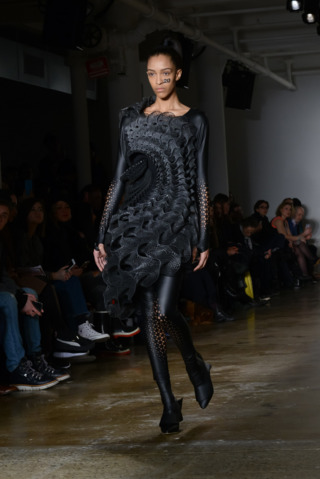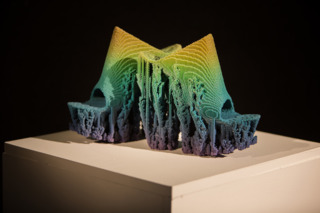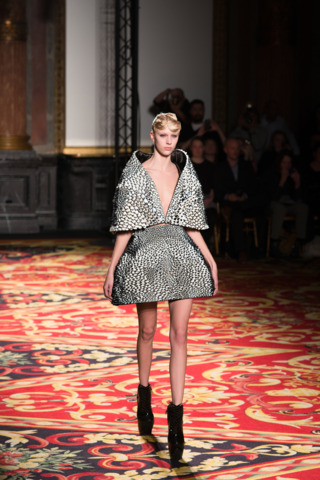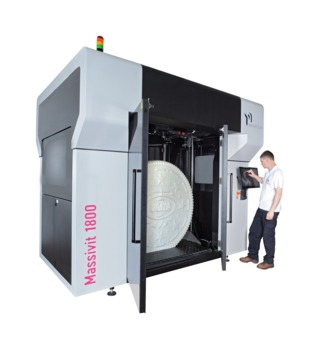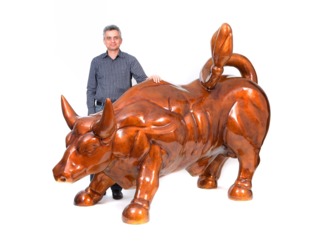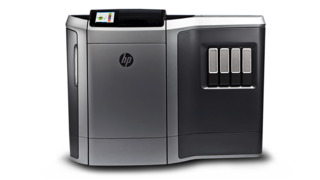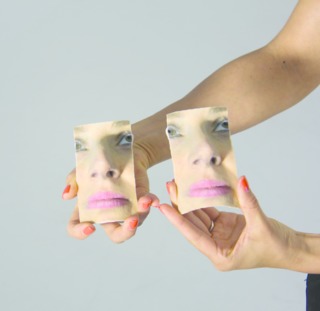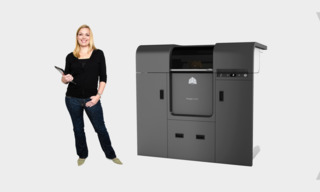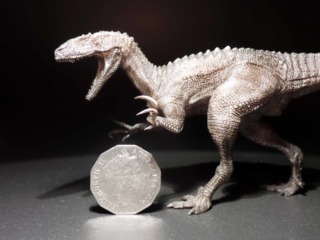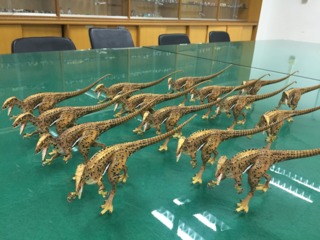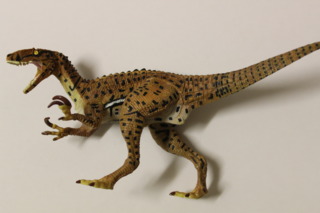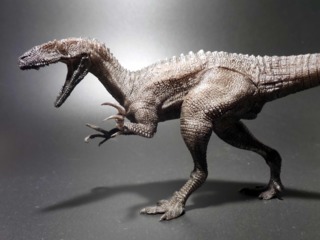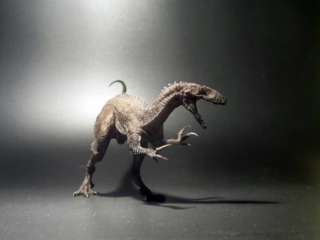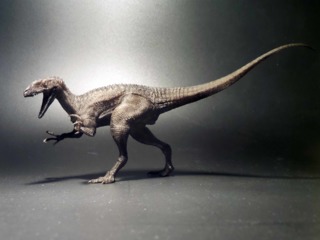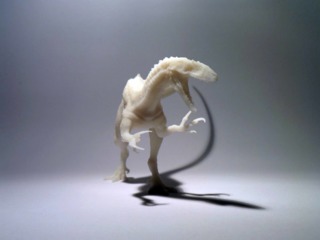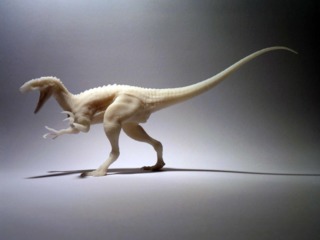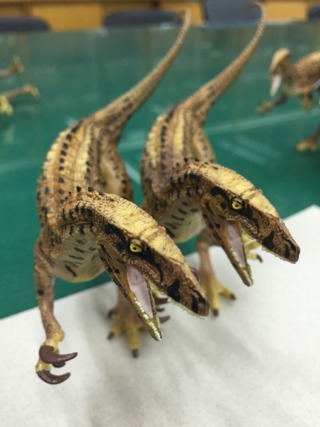A Brave New World
How will 3D printing impact commercial print?
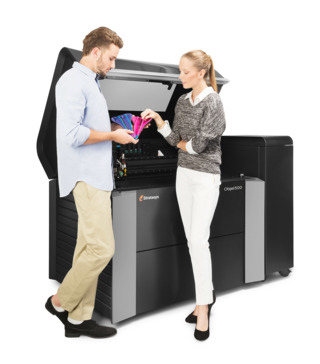
When it comes to printing, for decades — or longer — it has been defined as the act of putting some sort of ink or toner down on to some sort of paper. With the rise of flatbed technology, the world of print expanded to be able to print directly to objects like doors or large windows, while advances elsewhere allowed printers to put their ink onto products like pens or balls. But while the complexity of what could be printed on changed, the basic idea of putting ink onto an object remained the core tenant of “print.”
Until the advent of 3D printing.
The new 3D print technology is turning the idea of print on its head. Now, instead of acquiring an object and then printing on it, you can create the object itself, from scratch, using “inks” that are made of polymers and plastics. The first 3D printers created small, fragile pieces that were more novelties and proof of concept than anything else, but like all technology, that is changing.
First of all, it’s important to note that the rate of innovation in the 3D space is happening rapidly. It has taken only a few short years for the technology to go from novelty to a manufacturing process that can compete on quality with other, more traditional ways of creating products. And while the barrier to entry is still a higher cost, even that is coming down as companies continue to innovate.
And the companies involved aren’t tiny operations, either. One of the biggest names in 3D printing is Stratasys Ltd., which has been in the space from the start — 25 years. Not only do they produce their own machines and offer consultation services, they also invest in other promising companies and technologies, helping push 3D printing further into the mainstream commercial market.
One such investment was in Massivit 3D, a company that is specifically focused on large-format 3D printing, and wide-format print shops is one of their primary target customers, with an eye to providing the technology to allow those shops to better serve clients in markets such as POP advertisers and agencies, product promotion experts, branding designers and even retail and restaurant clients. They are also targeting markets such as trade shows and events, where having a 3D printer large enough to actually produce a wide range of materials — and even the structures of the booths themselves — could be a game-changing shift.
Another big name in the 3D world that commercial printers need to be aware of is 3D Systems. Like Stratasys, 3D Systems is dedicated to creating the devices that will revolutionize the way the world thinks about print. Some of the markets the company has targeted include automotive and aerospace applications, as well as a wide range of healthcare solutions, including bio-compatible materials that opens up the possibilities of what types of things can be produced using these machines.
Familiar names in the print world aren’t sitting idle when it comes to 3D technology, either. HP is currently working on taking its thermal inkjet technologies and moving them into the 3D space. They call it the Multi Jet Fusion solution, and the ideal is to combine their traditional print expertise with new innovations that will not only allow them to produce higher-quality products, but to do it for a much more economical price. For commercial printers, the tipping point between speculating about the future and actively offering 3D print services will come when the manufacturers get not only the machines, but the substrates themselves, to a price point that printers can realistically sell to their clients. And HP is betting that tipping point is going to come sooner, rather than later.
Konica Minolta is another familiar print name that is betting big on 3D. They already offer several lines of 3D printers until the Color Jet, Multi-Jet and Cube banners. Many of the models are more geared toward prototyping and small items, but that is rapidly changing. The ProJet 66o Pro, for example, can already reach sizes of 10x15x8 inches, with a resolution of up to 600x540 dpi, and up to 36 items per build. And the speed, size and resolution of these machines will only continue to improve, along with the ability to create higher-quality, more durable products.
You know a technology has reached a point of critical mass when it gets to the point of needing an organizing body to start to look at standardizing, and for 3D, that body is the 3MF Consortium. The stated goal of the group, which was founded in 2015, is to, “define a 3D printing format that will allow design applications to send full-fidelity 3D models to a mix of other applications, platforms, services and printers. Our goal is to quickly release and then maintain a specification that allows companies to focus on innovation, rather than on basic interoperability issues.”
The goal of the group is to take the wide range of file formats, with varying degrees of information, and create a standard that will allow printers and clients alike to know exactly what they need to get the highest quality end result. Standardizing will take the world of 3D print to the next level, truly allowing it to become a manufacturing process.
One of the things going for 3MF is the founding members who have not only committed money and resources, but have also agreed to make their patent claims available to the specifications on a royalty-free basis, which will allow for much faster innovation when it comes to taking the best ideas and processes, and creating a standard that will give 3D the best possible future. And the pledge of patents isn’t just an empty idea, either. With founding members like GE, Microsoft, HP, Stratasys and 3D Systems, there is some muscle to back the idea.
So what does all this mean for the average commercial printer? Today, not a whole lot. The technology is growing and evolving rapidly, but it’s still not to the point where it is a viable service that any printer can offer. Some early adopters will start to see success with it, but mainstream adoption — and mainstream demand — is still likely at least a few years out. That being said, some of the more forward-thinking print buyers are beginning to consider how 3D might expand their options and reduce their costs, and shops who target these types of buyers might want to start looking into the options. But for most, it is still in the “wait and see” stage. Not to see if 3D will take off — that is a given at this point — but instead to see when that tipping point will get the prices down to a level where a business model can be reliably built around the machine. Given the rate of innovation, that could happen in five years, or it could happen in just a year or two. Commercial printers can’t afford to ignore the space completely; now is the time to begin educating yourself about the process and the technologies, and start talking to clients about how they see 3D print fitting into their print buy down the line. Start planning now, so when the time does come to invest, you are ready to hit the ground running, and become known as the shop that really can do it all.
3D Printing Enables Australian Museum to Reproduce Dinosaur
You’ve seen it: The bobblehead that could only be identified as the star athlete by the name or number on his or her uniform. Or the doll that fails to capture an actress’ fine facial features. Or the triceratops toy whose skin is about as interesting as a piece of child’s clay.
David Elliott, Executive Chairman of the Australian Age of Dinosaurs (AAOD) Museum, wanted none of the above. He wanted an immaculate recreation of a theropod dinosaur called Banjo (scientific name Australovenator wintonensis) scaled down from five meters to 22 centimeters in length.
He got his wish through 3D printing of a finitely detailed master reference model used by a manufacturer to create molds for 1,000 miniature, life-like Banjo toys. The 1:24 scale model was produced by 3D Systems On Demand Manufacturing, Quickparts, services using Stereolithography (SLA) 3D printing.
Capturing detail in 3D print
The AAOD Museum houses a massive collection of bones from Australia’s largest dinosaurs and operates one of the most-productive fossil preparation facilities in the Southern Hemisphere. It also offers tours and other public programs.The skeletal remains of Banjo, named after Australian bush poet Banjo Paterson, was discovered by the AAOD Museum in 2009. Around 95-million years ago, the carnivorous Banjo raced along the Outback at 40 kph. The fierce, lean and agile theropod seemed like the perfect subject for AAOD’s first toy reproduction.
The museum used 3D printing in the past to create life-sized dinosaur models, but did not have access to the accuracy needed for small, finely detailed 3D toy models until David found out about 3D Systems On Demand Manufacturing services.
“A very highly detailed, computer-generated digital 3D model of Banjo had been created by paleo-artist Travis Tischler,” says Elliott. “The life-sized model is detailed to the point that every scale on the animal’s body is present. We wanted to capture this detail in the 22-centimeter-long toy so that every single wrinkle and scale was present in the final product.”
Quality and quickness
After a discussion of AAOD’s needs, it was decided that the reference model would be created on a 3D Systems ProJet 7000 HD SLA system using VisiJet SL FLEX material. The combination of printer, material and the expertise of the 3D Systems team created a model that captured the high-resolution details Elliott needed for his new toy series.
“We were impressed by the quality and the quick delivery of the model,” says Elliott. “The result was perfect and achieved an exact miniature replica of the life-sized digital file.”
When the 3D print was completed and post-processed, it was sent to a plastic toy manufacturer in China. The manufacturer created plastic injection molds of the detailed 3D print so it could generate exact replicas. The manufactured toys were then hand-painted to Tischler’s original specifications and boxed for sale.
David Elliott was so pleased with the result that he plans on producing three additional toys within the next year: Diamantinasaurus, a sauropod that will be the largest toy at 46 cm long (1:32 scale); Muttaburrasaurus, an ornithopod that will also be printed at 1:32 scale; and a small armored dinosaur named Minmi that will be 18 cm long at 1:15 scale.
Massive potential for reproductions
Elliott believes that 3D printing has great potential for reproducing animals, historical artifacts, sculpture and other works for museums.
“There is a massive opening for reproductions in the museum world,” he says. “High-quality reproductions can now be made simply by scanning, digital modeling and 3D printing an exact replica. Once the replica has been painted to original colors it is virtually impossible to tell it apart from the original.”
Scaling is vital to most reproductions, but 3D printing technology also offers viable options for full-sized museum models.
“Animals can be digitally constructed in 3D or fossils and sculptures can be captured by 3D scanning and then 3D printed,” says Elliott. “Once the printed sections have been fitted together, you can produce an exhibit that once required a major sculpting job or a highly trained taxidermist.”
Taking Fashion to a Whole New World
3D printing isn’t just for machine parts or branded give-aways; it can also be used to produce textiles. At New York Fashion Week 2016, several designers worked with 3D printer manufacturer Stratasys to create unique, innovative designs that walked the runway.
The designers at threeASFOUR created two dresses, the Pangolin and the Harmonograph, both part of the group’s Biominicry collection. They were created on the Stratasys Objet500 Connex3 printer, and were formed using a special nan-enhanced elastometric material which can create a textile that can stretch in six different ways — up, down, left, right, forward and backward.
“threeASFOUR has always been obsessed about creating our own textiles,” said Gabi Asfour, one of the threeASFOUR designers who worked on the project. “Number one, 3D printing allows us to create a new textile that does not exist.”
“Working with Stratasys gave us the ability to work with different materials that actually can function on the body,” said Adi Gil, another of the threeASFOUR designers. “These new materials can stretch and bend, and actually function.”
The second 3D print to walk the runway came from Dutch designer Iris van Herpen, in collaboration with Neri Oxman, a professor at MIT’s Media Lab. Her dress used a combination of rigid and rubber-like materials to create a unique garment that couldn’t have been produced any other way. She also used the Stratasys Objet500 Connex3 printer.
“I found out about 3D printing, and I thought it was really interesting, because I was already trying to create three-dimensional pieces,” said van Herpen. “So I found out about 3D printing and it opened a new world of thinking differently.”
“It was a very exciting collaboration,” noted Oxman. “At the very beginning we tried to create a piece of clothing that was seamless. Using the 3D printing technology to redefine couture by replacing hand-work with code. You can now print continuous surfaces without seams or without parts. Instead of the constraints being material, the constraints are now environmental — like air, like light, like humidity.”
These dresses are the just the beginning, as 3D technology continues to evolve and new, faster, more innovative ways of creating are discovered and refined. In the future, it won’t just be garments on the runway that were produced with 3D technology, but the clothes we wear on a daily basis.

